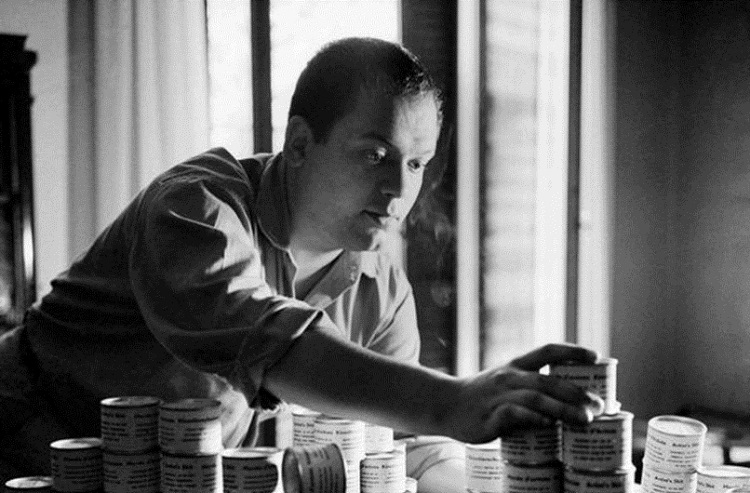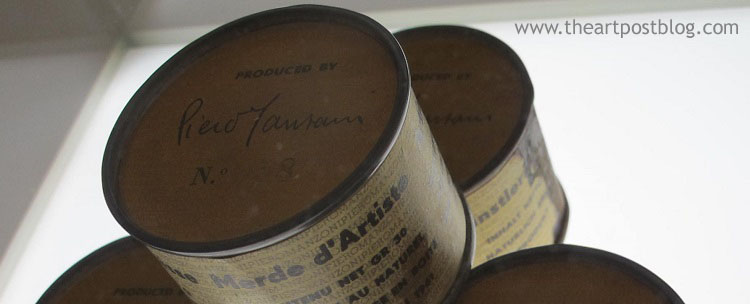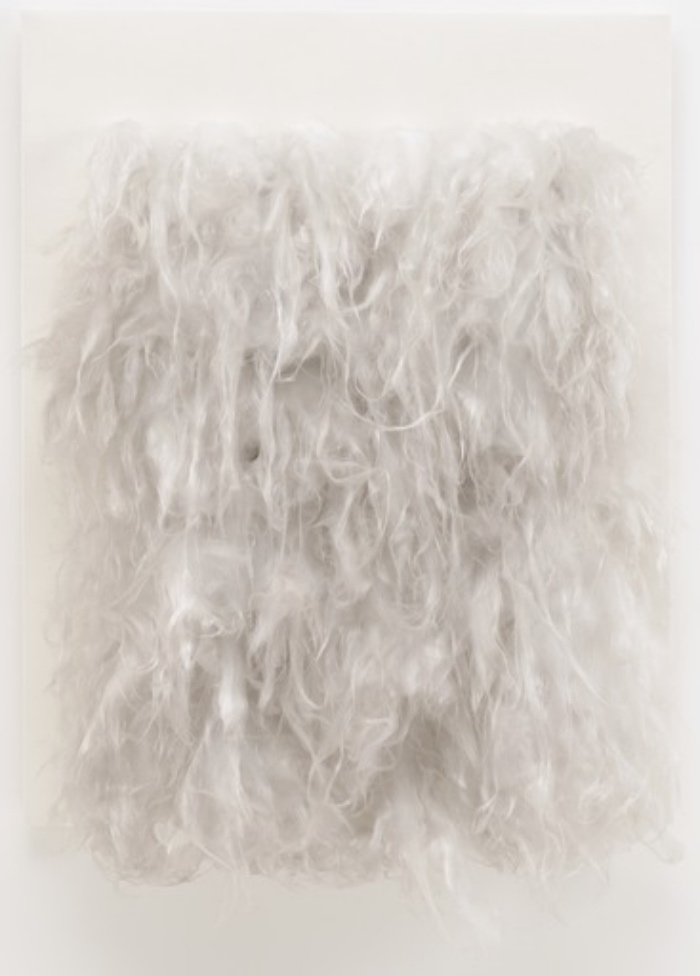
If today an artist were to put tins on sale with the words ‘Merda d’artista’ (artist’s shit), he would probably be accused of being just a provocateur chasing likes. Well, in 1961, when Piero Manzoni did it, the matter was much more serious (or was it?).
Because Piero Manzoni was no ordinary artist. He challenged the very meaning of art with a cutting irony, an uncommon conceptual ability and a natural talent for playing with the art system like a cat plays with a ball of wool.
But who was Piero Manzoni really? A visionary genius? A tireless provocateur? Or simply an artist with a laugh in his pocket and a great sense of humour? Let us find out together.
WHO PIERO MANZONI WAS

Piero Manzoni, Merda d’artista
Born in 1933, Manzoni did not just paint pictures: he transformed objects, gestures and even human bodies into works of art. He was one of those artists capable of seeing the invisible, of transforming nothingness into something grandiose.
Think of his Achromes, canvases without colour, devoid of any traditional brushstrokes. Why?
Because Manzoni wanted to strip away everything superfluous and get to the essence of matter. An idea that seems sophisticated, but which he treated with extreme lightness.
Then there were his more daring works, such asthe Sculture viventi, in which he signed people, turning them into works of art. Imagine meeting someone with a certificate stating: ‘I am a work by Piero Manzoni’.
What does it mean? That art is not just an object, but can also be a body, an identity, an experience.
The real stroke of genius comes with Merda d’artista.
The most resounding hoax in the history of art.
In 1961, Manzoni sealed 90 tin cans with the label ‘Merda d’artista’, weighed them and put them on sale for the price of gold. Yes, you read that right: the value of his… er… production was determined by the market value of the precious metal.
Provocation? Of course.
Irony? Absolutely.
In this ‘gesture’ there was also a ruthless criticism of the art market, which often turns anything into an object of worship and speculation. Today, one of these tins was auctioned for over 250,000 euros.
A performance that continues to be talked about.
Beware though: Piero Manzoni was not just a prankster. His was a philosophical and conceptual experiment.
If Duchamp had elevated a urinal to a work of art, why couldn’t Manzoni do the same with something even more ‘personal’?

Piero Manzoni, Achrome, 1962 – lana di vetro e velluto su tavola,
81,3×64,8×26,4cm – courtesy MoMA, New York – lascito Nina and Gordon Bunshaft, lascito Mrs. John Hay Whitney, e Fondo Donald B. Marron © 2018 Artists Rights Society (ARS), New York / SIAE, Roma
Why does Manzoni still affect us today?
The great thing about Manzoni is that he never took art too seriously. Or rather, he took art seriously.
Today, at a time when contemporary art divides, scandalises and fascinates, his rebellious spirit is more relevant than ever.
Let us think about how much our relationship with art has changed: once you had to go to a museum to see a work, today you just have to scroll through Instagram. Manzoni, already sixty years ago, understood that art was not just a matter of form and technique, but of idea, concept and context.
So the question is: did Manzoni mock us or give us a new perspective on the world?
Perhaps both.
And perhaps that is the beauty of art.

